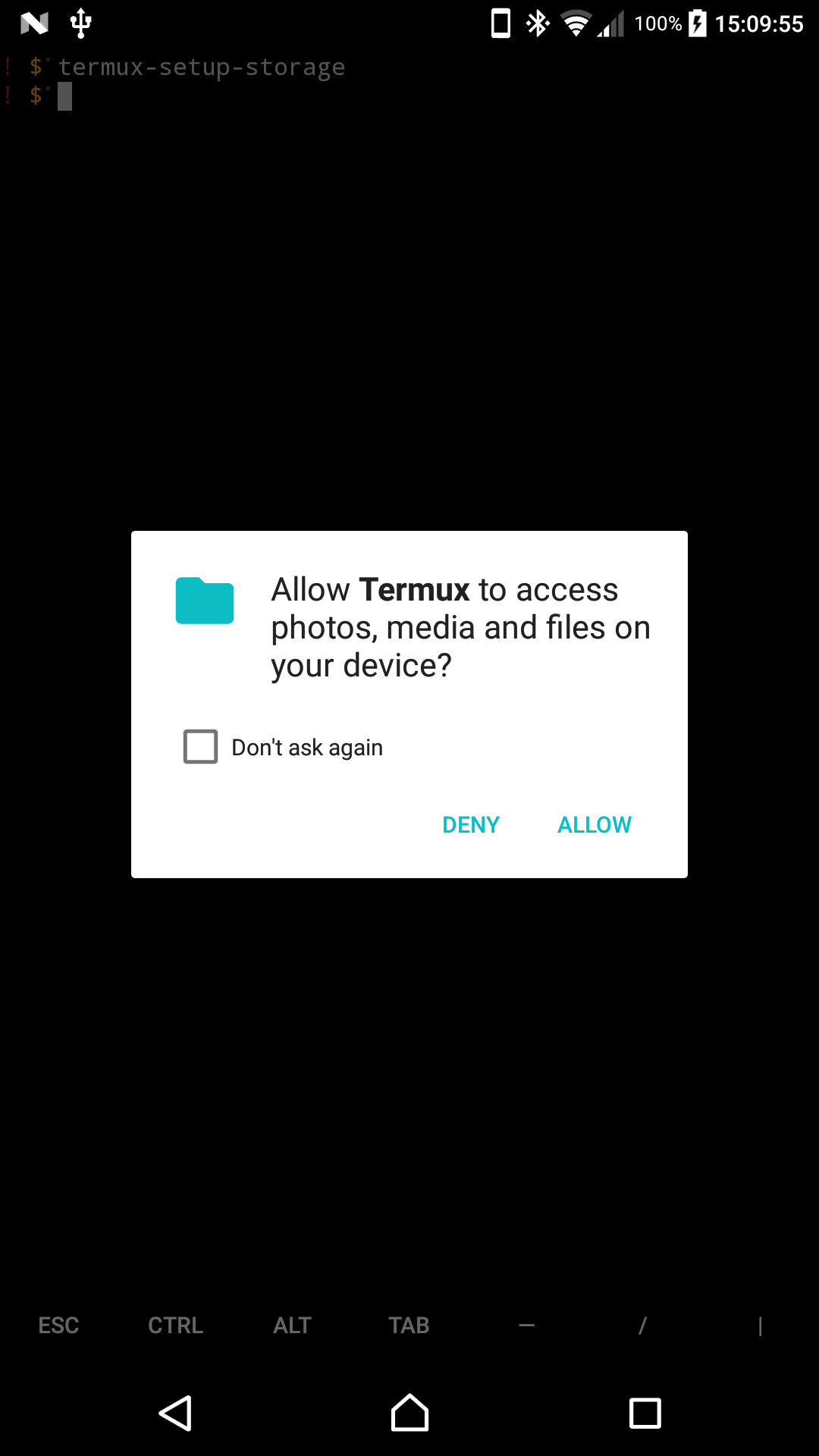Internal and external storage
There are three main types of storage in Termux:
- App-private storage: Files put in $HOME, available from inside Termux (or when explictly picked, when e.g. attaching a file to a mail).
- Shared internal storage: Storage in the device available to all apps. On Android 6.0 this requires the user to explicitly grant access to for Termux to access it.
- External storage: Storage on external SD cards. Each app has a private folder on the external SD card, and interchange between them needs to use a special API not yet available in Termux. SAF-based access is not possible as shell is executed outside of Android framework.
To access shared and external storage you need to run termux-setup-storage. You will then be prompted to "Allow Termux access photos, media and files on your device", which you should allow.

Executing termux-setup-storage ensures:
- That permission to shared storage is granted to Termux when running on Android 6.0 or later.
- That an app-private folder on external storage is created (if external storage exists).
- That a folder $HOME/storage is created.
~/storage
The contents of the created $HOME/storage folder are symlinks to different storage folders:
- The root of the shared storage between all apps.
~/storage/shared
- The standard directory for downloads from e.g. the system browser.
~/storage/downloads
- The traditional location for pictures and videos when mounting the device as a camera.
~/storage/dcim
- Standard directory in which to place pictures that are available to the user.
~/storage/pictures
- Standard directory in which to place any audio files that should be in the regular list of music for the user.
~/storage/music
- Standard directory in which to place movies that are available to the user.
~/storage/movies
- Symlink to a Termux-private folder on external storage (only if external storage is available).
~/storage/external-1
Important: do not clear Termux application data through Android OS Settings if you have any files placed to ~/storage/external-1. If you do so, all data will be lost as Android will wipe all directories associated with Termux.
Access Termux home directory from file manager
You can access Termux home directory from the file manager using Storage Access Framework and capable of accessing drives like USB or external SD-card in read-write mode.
Few recommended file managers which can access Termux home directory:
- FX File Explorer: https://play.google.com/store/apps/details?id=nextapp.fx
- Material Files: https://play.google.com/store/apps/details?id=me.zhanghai.android.files
Steps to enable access to $HOME are same as for any external drives: open storage manager --> select drive (Termux) --> Select root directory of storage.
Alternate way would be direct access to Termux home directory with Superuser permissions. That's possible only on rooted devices. However, using root to work with Termux files is not recommended way as you can easily mess up file access modes and SELinux contexts.